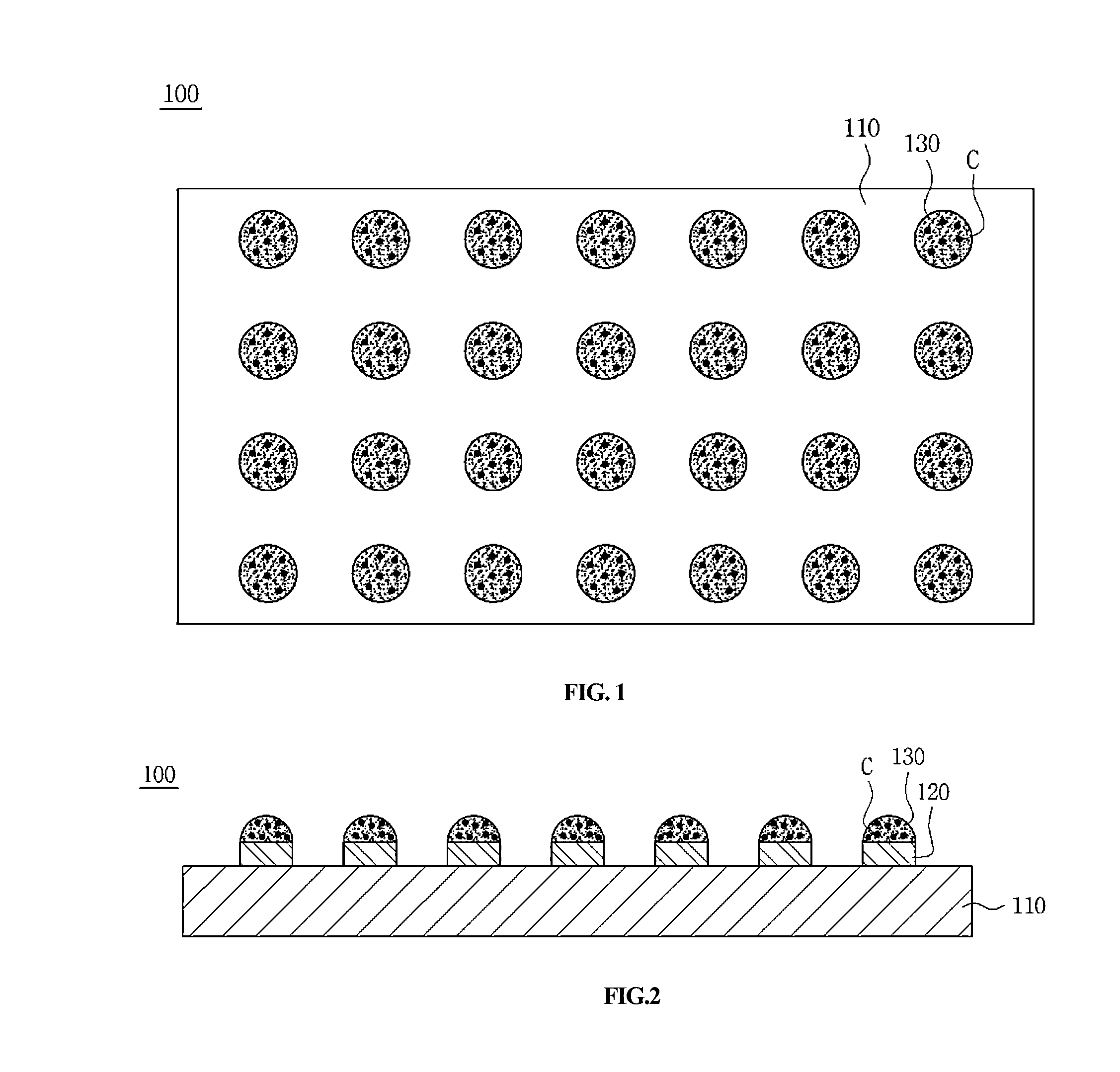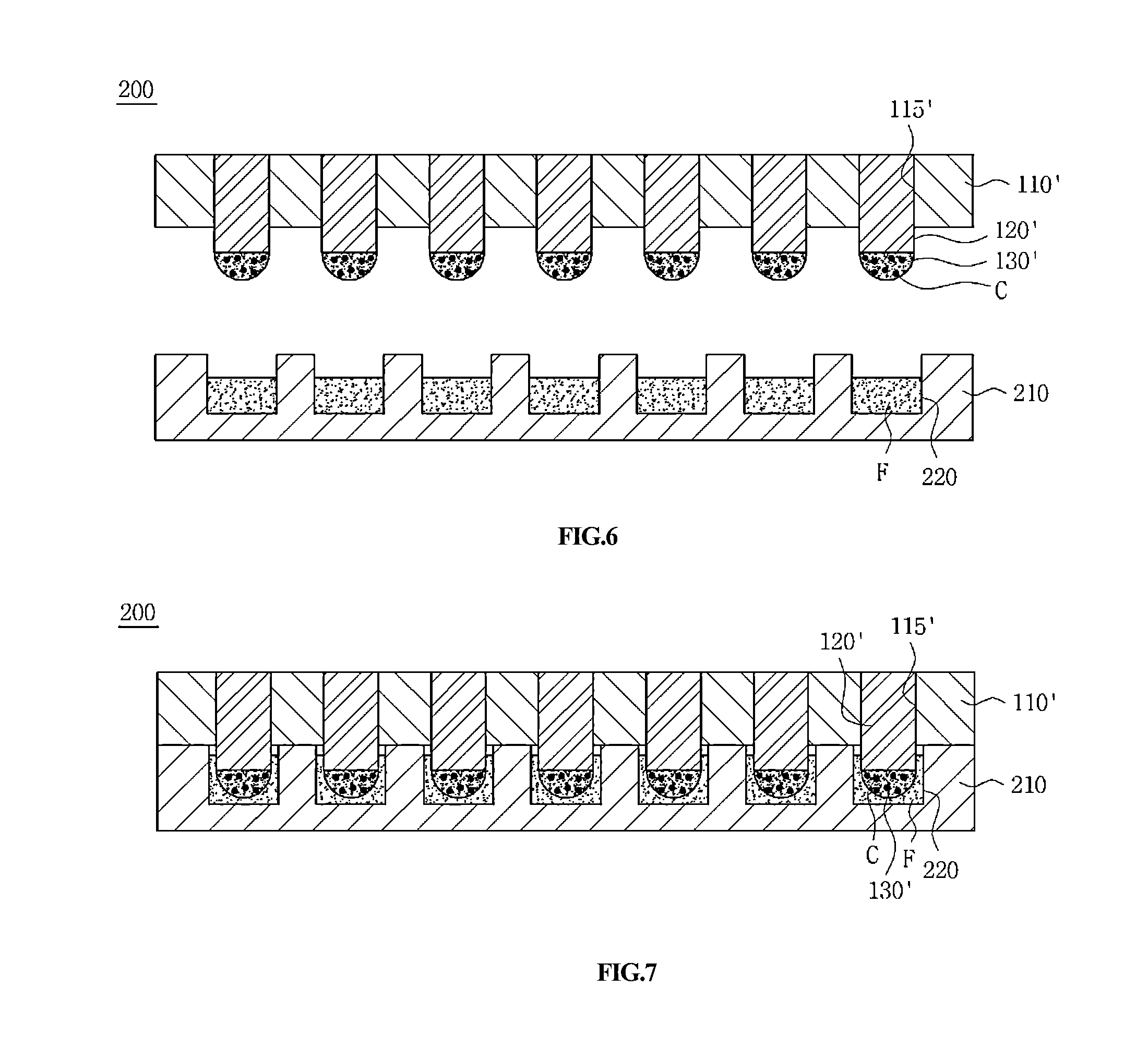Cell chips
a cell chip and array technology, applied in biochemistry apparatus and processes, laboratory glassware, instruments, etc., can solve the problems of difficult washing of cells in wells, no physical intercellular partition of array-based cell chips, and inability to wash cells in wells
- Summary
- Abstract
- Description
- Claims
- Application Information
AI Technical Summary
Benefits of technology
Problems solved by technology
Method used
Image
Examples
first embodiment
[0040]FIG. 1 is a top plane view schematically showing a cell chip according to the present invention, FIGS. 2 and 3 are a side view and a cross-sectional view schematically showing the cell chip of FIG. 1, FIG. 4 is a cross-sectional view showing a modification of the cell chip of FIG. 3, and FIG. 5 is a side view showing the use of the cell chip of FIG. 1. With reference thereto, the cell chip according to the present invention is described below.
[0041]As shown in FIGS. 1 to 3, the cell chip 100 is configured such that biomatrices 130 for immobilizing a biomaterial C are formed on fillers 120 and the fillers 120 are inserted into the insertion holes 115 of a substrate 110 and protrude from the substrate 110, and thus the biomatrices 130 are separated from the surface of the substrate 110 by a distance.
[0042]The substrate 110 is made of an opaque material. A non-limiting example thereof includes a plastic substrate, a ceramic substrate or the like. Alternatively, the substrate 110 ...
second embodiment
[0062]FIGS. 6 and 7 are cross-sectional views schematically showing a cell chip according to the present invention. With reference thereto, the cell chip according to the present embodiment is described below.
[0063]The cell chip 200 according to the present embodiment further includes a lower substrate 210 having a plurality of wells 220 that store at least one (hereinafter, referred to as a fluid) among a reagent and a culture broth to be supplied to the cell chip as shown in FIGS. 1 to 3. Below, an upper substrate 110′, fillers 120′, and biomatrices 130′ may be configured corresponding to the configuration as described with reference to FIGS. 1 to 3, and thus the detailed description thereof is omitted.
[0064]As shown in FIG. 6, the upper substrate 110′ has a plurality of insertion holes 115′, and the fillers 120′ are inserted into the insertion holes 115′. As such, the fillers 120′ are inserted to protrude from the lower surface of the upper substrate 110′, and the biomatrices 130...
PUM
 Login to View More
Login to View More Abstract
Description
Claims
Application Information
 Login to View More
Login to View More - R&D
- Intellectual Property
- Life Sciences
- Materials
- Tech Scout
- Unparalleled Data Quality
- Higher Quality Content
- 60% Fewer Hallucinations
Browse by: Latest US Patents, China's latest patents, Technical Efficacy Thesaurus, Application Domain, Technology Topic, Popular Technical Reports.
© 2025 PatSnap. All rights reserved.Legal|Privacy policy|Modern Slavery Act Transparency Statement|Sitemap|About US| Contact US: help@patsnap.com



